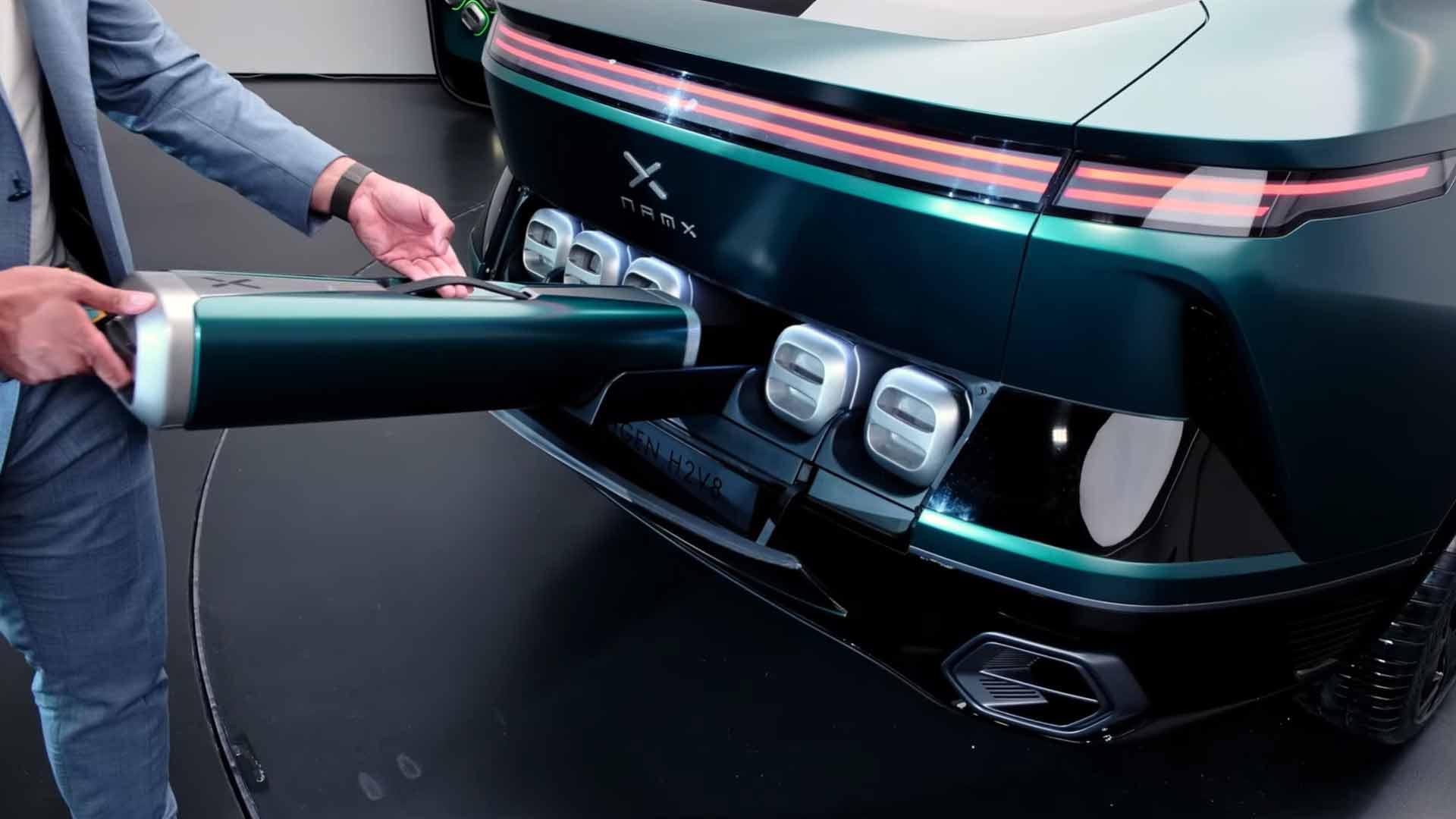Fortunately, there are companies like BMW, Yamaha, Toyota and NamX. These brands believe in a future for combustion engines that run on hydrogen. Perhaps not interesting for the masses, but fun for enthusiasts. NamX is a French start-up that developed this HUV, which stands for Hydrogen Utility Vehicle, together with design house Pininfarina. Like Yamaha and Toyota, NamX works with a hydrogen V8 engine. You can hear what that sounds like at the bottom of the page.
According to the French company, a combustion engine requires less pure hydrogen than hydrogen-electric cars. This will undoubtedly make a difference in the production costs of hydrogen. A combustion engine also requires fewer scarce raw materials than a fuel cell that converts hydrogen into electricity. Hydrogen cars with combustion engines would therefore be more sustainable to build, and hopefully ultimately affordable.
No need to refuel…

The big problem with a hydrogen car now is finding a filling station. NamX has come up with a solution for this: in addition to a normal 5 kilo tank, you can put hydrogen capsules of 0.5 kilo each in the car. NamX wants to offer these capsules at its own stores, but they also want to deliver the capsules to your home. You also fill the capsules when refueling at a hydrogen filling station.
NamX calls these shops 'CapXtores'. Of these, 4,000 should be in Europe. You can do your shopping at these locations, but you can also exchange your empty capsules for full ones. It's a smart concept: there are few car manufacturers (except Tesla, with the Superchargers) who also make money from fuel when they sell a car. Plus they get turnover from the shops.
Gosh: a V8 is less efficient
The NamX HUV should travel a total of 800 kilometers on 8 kilos of hydrogen. So 100 kilometers per kilo. For comparison: the hydrogen-electric Toyota Mirai can travel a maximum of 650 kilometers thanks to a tank capacity of 5.6 kilos. It has of course been known for a long time that a combustion engine is less efficient than a fuel cell.
NamX's capsule system is pleasant for the pressure at hydrogen filling stations. According to it California Air Resources Board Hydrogen filling stations can only dispense 180 kilos of hydrogen per day. That's about 22 NamX HUVs per day. The station needs 18 hours to pressurize the requested hydrogen. The capsules solve this problem, although there must of course be enough capsules.
Specifications of the NamX HUV
Initially, the NamX HUV will be available in two versions. The entry-level car is said to have 300 hp of power, which should allow it to sprint from 0 to 100 km/h in 6.5 seconds. The top speed is 200 km/h. The price tag should be somewhere around 65,000 euros, without Dutch taxes.
Then there will also be a version called 'GTH'. This version gets four-wheel drive and 500 hp of power. The 0-100 time shrinks to 4.5 seconds, just as fast as an Alfa Romeo 4C, and the top speed grows to 250 km/h. The price would also increase to a maximum of 95,000 euros with options.
You can pre-order the NamX HUV by depositing 1,000 euros into the NamX bank account number. Sometime in late 2026, NamX and Pininfarina hope to begin deliveries. Hopefully we can ride with him towards his premiere. Before then, you can listen to the rumble of the V8 below.
#order #hydrogen #car #6.2liter #refuel
